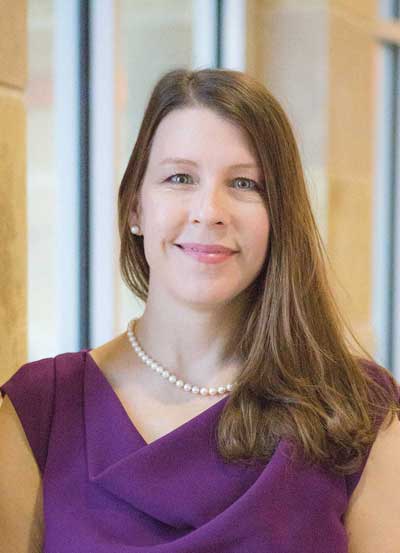Making Progress in the Treatment of Childhood Obesity

Jennifer C. Seger, MD, FOMA, is the Co-clinical Editor of Bariatric Times; Diplomate, American Board of Obesity Medicine; Medical Director, Bariatric Medical Institute of Texas, San Antonio, Texas.
Dear Readers,
By now, you’ve probably read about the recently published American Academy of Pediatrics (AAP) guidelines for the treatment of obesity. In medicine, some guidelines roll out and hardly get noticed or mentioned in the news. This is certainly not the case with these new guidelines.
Strong responses, both positive and negative, have been circulating in mainstream and social media alike. I must admit that I was truly taken aback by the negativity. Finally, we have the leading authority in pediatric medicine taking a strong stand on the treatment of obesity! As my children say…OMG!
The AAP guidelines were not a rushed or rash decision; rather, they have taken years to develop. As a former board member of both the Obesity Medicine Association (OMA) and the American Board of Obesity Medicine (ABOM), which have long advocated for increased awareness of obesity as a disease and the training and education of clinicians, I know for a fact that the AAP was previously very reluctant to sign onto a more proactive approach to treating obesity. They previously had the “Let’s Go! 5-2-1-0” recommendations for diet and lifestyle, and they were sticking to it.
The results were not great. More and more children with obesity became adults with obesity. Children were developing obesity-related chronic diseases, previously only seen in adults, and an alarmingly high rate. The AAP knew their approach wasn’t working, and they knew they had to respond.
The naysayers complain that these guidelines are too drastic. They portend that the AAP is just pushing drugs and surgery for our kids. One article referred to the guidelines as “egregious,” quoting a registered dietitian, “In my 20+ years as a registered dietitian/nutrition therapist, I have NEVER met an adult that found weight loss interventions/advice from their childhood pediatrician helpful. It almost always results in harm, also known as an eating disorder.”1 Alexis Conason, psychologist, certified eating disorder specialist and author of Diet Free Revolution, agrees, stating “These guidelines set up a recipe for eating disorders to flourish.”2 These opinions seem outdated and more based on the dark days of the past when virtually no one was properly educated and trained in obesity management.
In an article published in Forbes, author Virgie Tovar states, “If weight discrimination laws did exist, it would be difficult to imagine the existence of these AAP guidelines, which rely upon the differential treatment of patients on the basis of size.”3 Really?
If you take the time to read the guidelines in their entirety,4 you will see that is not at all what the AAP’s new guidelines are stating, but rather, they are finally owning up to the fact that watchful waiting is not effective. Most kids do not ‘grow out of it.’ The AAP guidelines advocate for proper assessment (including screening for eating disorders); testing, such as appropriate labs; and evaluations for sleep apnea and fatty liver. The guidelines also advocate for education for both the family and patient regarding a compassionate, comprehensive approach to lifestyle, which includes nutrition (not a diet), physical activity, optimizing sleep, managing stress…and if needed, yes, they now recommend escalating the level of care to include the consideration of medication and/or bariatric surgery.
I hear the concerns from those who worry that addressing obesity could possibly lead to increased stigma, bias, and eating disorders, but I respectfully disagree. As a practicing family and obesity medicine specialist, I just don’t see this. Done in the right way, addressing overweight and obesity can not only improve current physical health and wellbeing, but it can decrease the risk of future disease and disability while improving the overall quality of life.
What child who was compassionately guided and supported toward a healthier weight said, “I wish I wouldn’t have done this?” I’d argue none. How many adults do I treat who say, “I wish I would have learned this a long time ago?” 100%.
In health,
Jenny Seger, MD, FOMA
References
- Young CL. The AAP’s new guidelines for childhood obesity are getting major backlash. Yahoo News. 28 Jan 2023. https://www.yahoo.com/lifestyle/aaps-guidelines-childhood-obesity-getting-123000256.html. Accessed 31 Jan 2023.
- Rodriguez A. Weight loss drugs and surgery – for kids? Why new obesity guidance is drawing scrutiny. MSN. 24 Jan 2023. https://www.msn.com/en-us/health/other/weight-loss-drugs-and-surgery-for-kids-why-new-obesity-guidance-is-drawing-scrutiny/ar-AA16w3iW. Accessed 31 Jan 2023.
- Tovar V. Could the American Academy of Pediatrics guidelines pave new paths to weight stigma? Forbes. 27 Jan 2023. https://www.forbes.com/sites/virgietovar/2023/01/27/could-the-american-academy-of-pediatrics-guidelines-pave-new-paths-to-weight-stigma/?sh=2d6eb25a72a7. Accessed 31 Jan 2023.
- American Academy of Pediatrics. Clinical practice guideline for the evaluation and treatment of children and adolescents with obesity. https://www.aap.org/en/patient-care/institute-for-healthy-childhood-weight/clinical-practice-guideline-for-the-evaluation-and-treatment-of-pediatric-obesity/. Accessed 31 Jan 2023.
Category: Editorial Message, Past Articles




